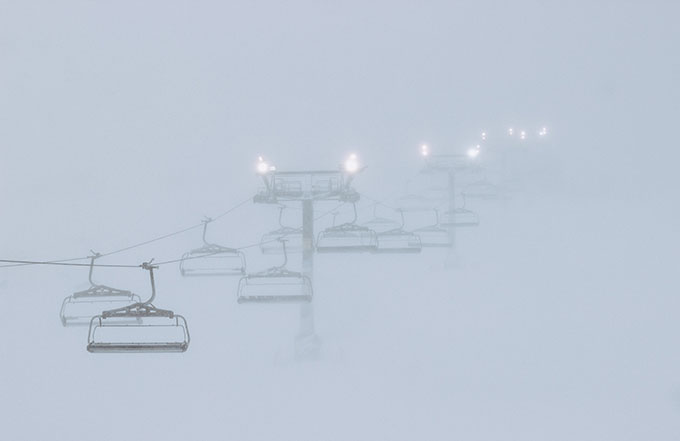Skiing is certainly one of the most exciting sports of the winter season, but at the same time, it can be a very dangerous sport, so one of the important preparations before skiing is to recognize the potential weather hazards you may encounter on your ski trip and to understand how these weather hazards may affect the sport of skiing. On this page, I will list the weather hazards you need to consider while skiing and the information you need to know to help you avoid these hazards.
Unusual Temperature
The most suitable temperature for skiing is between -8 and +3 degrees Celsius, and temperatures either above or below this can be hazardous to skiers. Therefore, skiers need to anticipate snow conditions in advance based on the temperature.
The persistent extremely cold weather can cause water to condense in the snow, harden the snow and even cause thick layers of ice crystals, and can lead to frostbite and hypothermia. Therefore, at temperatures of about -10°C or lower, you'll need to be aware of keeping warm, such as wearing extra layers, warmer gloves or mittens or considering putting chemical warmers in your boots and gloves, and always monitoring your extremities for signs of frostbite.
When the temperature reaches above 0℃, under the action of sunlight and skiing, the snow surface will gradually melt, the moisture of the snow will increase, and then become soft, and then avalanches can happen. Skiers may experience hyperthermia or heat stroke, so when in warm weather, be prepared to wear a minimum number of thin layers. If there is sunshine, you should be aware of strong sun exposure and constant repetition of the application will prevent sun peeling. Take care not to overexert yourself and always stay hydrated.
Avalanche
An avalanche is a snow flow that moves down the slope of a mountain and it can be triggered by human activity, such as skiing or snowboarding. However, there are many natural causes as well, including new snowfall on an existing snowpack, significant temperature changes, the breaking of a snow cornice, and even earthquakes. Avalanche often forms in two different types: loose snow avalanches and slab avalanches.
A loose avalanche is an avalanche that is released from a point and spreads downhill. Smaller loose avalanches, also known as landslides, often start at a single point and fan outward during the descent. These types of avalanches are generally not very dangerous to people. However, they usually knock people off their feet and carry them downhill.
On the other hand, slab avalanches tend to be more dangerous for people. It occurs when a weaker layer of snow is topped by a denser or at least a stronger layer of snow, and this stronger layer tends to break up on the slope, almost like a piece of glass, and then all the snow slides off at the same time. Slab avalanches tend to be either wet or dry, with wet avalanches forming when there is rapid warming above the melting point. Dry avalanches are usually the product of wind-drifted snow or a load of fresh snow. These avalanches also occur at a faster rate than wet avalanches.

The New York Times, accessed December 2019Links to an external site.
High Wind Speed
When planning your snowboard trip, you should also consider the current wind speed. It is important to note that the wind speed can be much higher when you are in a wind exposed area than when you are in a sheltered area of the mountain. Snowboarding in fast winds is dangerous because it can make it difficult to control your balance, which could cause you to get injured. A blizzard, the severe snowstorm with a long duration, may happen if there are sustained winds of at least 56 km/h. It can be of enormous size, often extending over hundreds or thousands of kilometers. It will be extremely difficult to stand or walk at 200 km/h. You will be blown away by the wind very easily. In this case, if you add in the cold temperatures, frostbite is almost instantaneous.

Mountainwatch, accessed August 2017Links to an external site.
References:
https://www.eoas.ubc.ca/courses/atsc113/snow/learning_goals-snow.htmlLinks to an external site.
 icons at the top right corner of the subsection.
icons at the top right corner of the subsection.